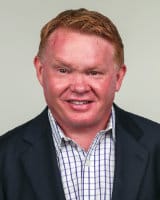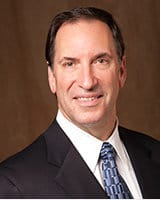
I remember sitting in class in dental school back when the earth was cooling, thinking, "If I ever get out of here, I'm never coming back." Well, eventually I did get out of there and realized afterwards the incredible knowledge and skills I had somehow acquired. I also realized how ill-prepared I was to face the many financial decisions that were not based on my extensive knowledge of enamel rods or biochemistry.
For instance, trying to consider - out of a myriad of options - which path to take to find my ideal career. Start a practice? Buy a practice? Be an associate? Go back to school? I eventually ended up going into the military, and that gave me time to decide just what I wanted to be when I grew up. It turned out to be a good avenue for me clinically, as I gained a lot of valuable skill and experience to add to my huge store of knowledge.
But when it was time to leave the service, I still didn't know any more about the business of dentistry than when I graduated. At that time, there weren't consultants and the resources that are available today to learn how to evaluate, judge, decide and execute a career plan. Like most dentists, my success was due more to good luck than good management. I bought a practice and learned some successful lessons, but also learned to perfect my numerous mistakes until even they worked for me.
Going into my practice purchase, I was very concerned about the practice price and getting the best price imaginable. So much so that it cost me a lot of money in lost income to save a pittance on price. Talk about tripping over the dollars to get to the pennies! It wasn't until years later that I realized the absurdity of my approach, but at the time it seemed ultimately logical and smart. Plus, my friends agreed with me, so it had to be right.
Now, so many years later that I can't believe it and with much more education, knowledge and experience, I have discovered some of the secrets of practice success. It's amazing how different the real principles are from the ones I thought were right years ago.
In achieving success, defining your goal is the most important principle. Your goal has to be very specific and quantifiable. Most importantly, it is NOT what you want to DO, but rather what you want to HAVE.
For instance, most dentists want to HAVE a financially successful practice. But too many times, what they want to DO is pay as little as possible for a practice purchase. The trouble is, this is an exact contradiction to achieving the goal of HAVING a financially successful practice. We equate a high price with high risk and low income, which while intuitive, is exactly wrong.
I discovered too late that I scored a bulls-eye in my target goal, but the trouble was it was the wrong target. I got my low-priced practice, but it wasn't going to make me a large income.
Now it's time to learn some terms and concepts. PRICE and VALUE are the keywords here. PRICE as the money a seller receives when he or she sells something. Sellers receive PRICE. On the other hand, VALUE is the benefit the buyer gets from the use of the thing he or she buys. Buyers receive VALUE.
Too often, practice buyers zero in on PRICE as their primary practice purchase issue. You would think that the purpose of going to college and dental school for eight years was to see how inexpensively they could get into practice. Unfortunately, the outcome of this focus was a low salary. These buyers would have been better off if they had sought out VALUE rather than a low price, since VALUE in a dental practice is actually the salary that the buyer takes home.
One of my most successful clients I have ever dealt with learned this valuable principle when he purchased his practice. I remember when he called from out of state about a practice for sale here in town. I told him that he should come over immediately to look at this practice, because it was very special. He told me that he couldn't afford a hotel room, so I offered to have him stay at my home, and even offered gas money if he needed it (I don't do that anymore).
After a few days of having him and his wife stay with us, Bill got to the point and said "Earl, can you honestly tell me this is a good deal? The price is $800,000 which is 80 percent of the practice gross and the seller is staying on working at a high percent commission."
I replied that it depends on what you call a good deal. I told Bill, "If you think a good deal is a low priced practice at a low percentage of the gross and a seller working for a low percent commission, this is the worst practice you will ever find. But if you think a good deal is making the biggest salary for the least amount of work is a good deal, this practice is the best you will ever find. But if the high price is getting in your way, we'll find you a cheaper practice where you can work harder for less money'.
Well, that got through to Bill. His goal was not to work harder for less money, but to earn more money. As it turned out, he even increased the gross income by $700,000 in his first year, and netted, after paying the payments on the too high of a price, over a half million dollars for himself.
You might ask yourself, "How do I evaluate VALUE? Where do I look for it, how do I recognize it, and how do I judge it?" For now, the simple answer is that when your time comes to inspect practices to purchase, make sure you find a qualified person who understands the economics of dental practices to explain the Cash Flow for you. Learn the numbers - the dollars and percentages - and the standards for evaluating them in order to make the best informed decisions in your best interest.
Now let's apply this information in a practical way. Suppose you wanted to buy one of two nearly identical looking practices that are ideal for your needs. You're not sure which the best financial choice is because you don't understand the cash flow of them. So, let's examine two actual practice examples.
Table 1 Practice A Practice B Gross collections
$654,643 $472,803 Practice price
$425,000 $289,000 Price as a percent of gross
65% 61% Buyer net income after all expenses and debt service $121,910 $129,353 Buyer net as percentage of gross collections 19% 27%
In looking at table 1, most buyers would agree that Practice B is more desirable than Practice A because the price is lower in dollars and as a percentage of the gross, the net income is higher, and the percentage of net income is higher.
Before you sign a letter of intent or contract and swipe your credit card to make a deposit to buy Practice B, let's take a deeper look at these two practices. Table 2 now shows that Practice A, while providing a slightly lower salary than Practice B (only $9,000 less) requires only one third as much work by the purchaser that Practice B does. So the buyer of Practice B has to work three times as hard for essentially the same salary as the buyer of Practice A.
Table 2 Practice A Practice B Hygiene collection
$170,879 $104,017 Seller (as post-sale associate to buyer) $363,327 $0 Buyer produced collections
$120,437 $368,786 Buyer net income after all expenses and debt service $121,910 $129,353 Buyer net as a percentage of personal production 101% 35%
Don't get me wrong, Practice B is a good practice, but Practice A is fantastic! But if we had not closely examined the cash flow, we would have bought Practice B and worked three times harder for the same income. Thankfully, we never would have known it. If you noticed, the most important factor I examined was the buyer percentage net as a percentage of buyer's personal production. Very few consultants examine this statistic, but I consider it to be the most important figure on the page, along with the dollar net income.
What makes Practice A so special? For one thing, Practice A's overhead expenses are 11 percent lower than Practice B. There's $72,000 less overhead and more salary right there.
But the biggest reason that Practice A is so lucrative is the profit the buyer receives from the work done by the seller who works for the buyer after the sale and the hygienists. After paying the seller and hygienist salaries of $198,000 for the income they bring in, the buyer will see a profit from their work of over $330,000! This pays the bank loan payments (debt service) of $116,000 per year with an additional $220,000 per year to pay the practice expenses.
The huge contrast of these two actual practice opportunities goes to show how important it is to understand cash flow. You simply have to get beyond focusing on price and the price as a percent of the gross. Until you can measure and evaluate Value and how it relates to your individual effort, it's impossible to make the best buying decision.
So good luck in achieving your goals, and even better luck in picking the goals you really want. Just be sure to get the best help available in evaluating the opportunities you're going to face. Your success depends on it.

 Add me to your address book
Add me to your address book



